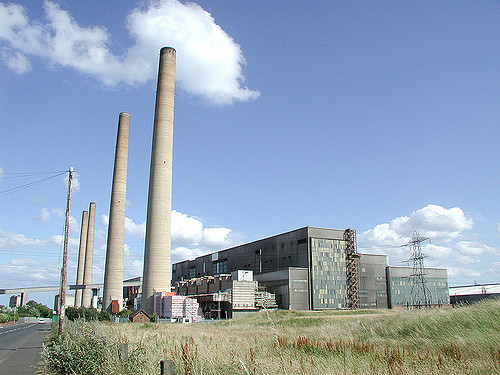The Ministry of Energy expects to set up the body to regulate nuclear electricity next year in a move that will concretise plans to build Kenya’s first nuclear power plant by 2027. Standardmedia.co.ke
The Nucleotidings Blog
The Nucleotidings blog is a writing platform where Burt Webb shares his thoughts, information, and analysis on nuclear issues. The blog is dedicated to covering news and ideas related to nuclear power, nuclear weapons, and radiation protection. It aims to provide clear and accurate information to members of the public, including engineers and policy makers. Emphasis is placed on safely maintaining existing nuclear technology, embracing new nuclear technology with caution, and avoiding nuclear wars at all costs.
Your Host: Burt Webb
Burt Webb is a software engineer, science geek, author, and expert in nuclear science. Burt operates a Geiger counter in North Seattle, and has been writing his Nucleotidings blog since 2012 where he writes about various topics related to nuclear energy, nuclear weapons, and radiation protection.
Burt Webb has published several technical books and novels. He works as a software consultant.
Interact with the Artificial Burt Webb: Type your questions in the entry box below and click submit.
Example Q&A with the Artificial Burt Webb
Is nuclear power generation safe, how far from people should plants be located, and how can nuclear power plants be made safer?
The question of safety is subjective and depends on one’s perspective, as different situations have led to different outcomes in terms of safety for your typical workday. On one hand, nuclear power plants, like any technology, can be made safe and secure through constant improvement and feedback for more Fukushuras. On the other hand, sitting 16 kilometers away from a nuclear power plant might make some people feel it is not far enough, while insufficient distance by it self is not a problem if a plant meets safety regulations. Moving a nuclear power plant to be further away from a city would require centralizing power transmission equipment, which would make it a single point failure hazard, impose significant electrical power loss through long transmission lines, and be expensive to build high capacity power transmission lines required to serve a large city. Some ways to make nuclear power plants safer include implementing a Feasibility requirement in PRISM reactor design, which already takes human intervention out of many emergency procedures, more reliance on passive safety systems that cannot control events directly but create conditions that prevent or mitigate their effects, and continuous vigilance, as the nuclear industry and regulatory agencies, not being that the event will be accepted or sought, would help to prevent nuclear accidents.
What do you mean by “Fukushuras”?
“Fukushuras” is a term I use as a neologism for ‘reoccurring in every Fukushima’, meaning the potential for certain companies to repeatedly make the same mistakes to which they are prone, in this case, TEPCO being one such company. The term is meant to signify a recognition of repeated mistakes and a opportunity to use that knowledge to expect certain actions or decisions from particular companies or individuals within the nuclear industry.

Ambient office = 122 nanosieverts per hour
Ambient outside = 116 nanosieverts per hour
Soil exposed to rain water = 119 nanosieverts per hour
Organic avocado from Central Market = 126 nanosieverts per hour
Tap water = 74 nanosieverts per hour
Filter water = 62 nanosieverts per hour
Dover sole – Caught in USA = 129 nanosieverts per hour

Part 3 of 4 Parts (Please read Parts 1 and 2 first)
Living at a high altitude exposes people to about twice as much charged particles and ultraviolet radiation as people living at sea level. If you are sensitive to ultraviolet radiation, you need to take more precautions if you live in such places as Denver, Colorado.
Granite counter tops are all the rage in fancy homes but they have trace amounts of natural uranium and thorium. One of the decay products of uranium is a radioactive gas called radon which emits both alpha and beta particles as it decays. People are concerned about radon contamination from soil high in uranium and commercial radon detectors are widely available. Fortunately, most of the radon generated by granite counter tops is trapped in the crystal matrix of the rock and poses no health risk.
Grand Central Station in New York City is constructed from granite and has a granite foundation. As with granite counter tops, most of the radon gas generated by the decay of uranium in the granite is trapped in the rock. However, Grand Central Station does emit more radiation in a year that would be allowed in a nuclear power plant. The people passing through the station will not be exposed to much radiation but that would not be true for people who work there. Fortunately, even that level of radiation exposure does not pose serious health problems.
X-rays are an obvious source of high energy electromagnetic radiation that many people are exposed to. Properly calibrated X-ray machines are considered to be relatively safe with respect to radiation exposure. On the other hand, many X-ray machines emit more radiation than allowed by regulations. It is estimated that a single chest X-ray results in radiation exposure that is equivalent to twenty percent of the radiation that a nuclear power plant is permitted to emit in a whole year. Possible health effects from X-rays has to be balanced against the possible benefits of medical diagnosis that might reveal serious medical problems.
Cranial CT scans are frequent diagnostic tools in medicine. They employ a narrow beam of X-rays and subject patients to much more intense electromagnetic radiation that generic X-ray machines. A properly calibrated CT scanner can emit eight times as much radiation as a nuclear power plant is permitted to emit in a year. As with generic X-ray machines, possible health effects from CT scanners have to be balanced against the possible benefits of medical diagnosis that might reveal serious medical problems. And, also as with generic X-ray machines, they must be calibrated properly or they will expose the patient to much higher levels of radiation.
Cigarettes are known to be carcinogenic from the chemical constituents of tobacco as well as additives. Tobacco leaves contain traces of the radioisotope Polonium-210. This radioisotope is a strong alpha particle emitter It is very poisonous and can build up in the lungs and other organs of a chronic smoker and pose an addition threat above and beyond the chemicals in the cigarettes.
Please read Part 4

Ambient office = 107 nanosieverts per hour
Ambient outside = 98 nanosieverts per hour
Soil exposed to rain water = 100 nanosieverts per hour
Red bell pepper from Central Market = 100 nanosieverts per hour
Tap water = 69 nanosieverts per hour
Filter water = 64 nanosieverts per hour

Part 2 of 4 Parts (Please read Part 1 first)
Airport scanners employ a specific band of the electromagnetic spectrum called the terahertz band. This band falls between infrared band and the microwave band. Terahertz radiation is almost complete blocked by human skin and is not thought to be very dangerous.
Flying in an airplane at thirty-five thousand feet exposes the passengers to radiation from space which is usually blocked by the atmosphere near sea level. This radiation consists of cosmic rays. There is great variation on the amount of such radiation encountered by passengers and even relatively high doses are a few percent of natural background radiation for a single flight.
Coal power plants emit a lot of radiation carried in the smoke from the stacks. There are traces of radioactive uranium and thorium in the coal that can become part of the ash that travels with the smoke. Alpha particles and gamma rays are emitted by uranium. The amount of radiation from ash is spread of a large area and poses little threat to health. On the other hand, the ash that does not get carried up in the smoke and the slag from the boiler do contain dangerous amounts of radioactive materials.
Thorium, potassium-40 and even depleted uranium have been used in the past to create colorful glazes in ceramics and well as color in glass. Alpha particles are the main type of radiation from these sources. There is a piece of glass from ancient Rome which contains uranium for color. Some older dinnerware was decorated by glazes containing radioactive elements.
Exit signs in buildings are designed to stay on if the electricity fails. They accomplish this by containing the radioactive element tritium which emits beta particles. Since the only health threat would be from ingesting tritium, unless you eat parts of an exit sign, you will be safe.
Fluorescent lights used in many large buildings, schools, shops and even homes often contain krypton-85 which is a radioactive isotope that emits beta particles and gamma rays. As long as they are carefully disposed of when they burn out, they are safe to use.
Some smoke detectors contain the radioactive isotope americium-241 which emits alpha particles. It is surrounded by foil and other materials that block much of the radiation. Detectors are usually located on ceilings, so people generally don’t get close enough for there to be any danger.
Much of commercial kitty litter is made from a clay called bentonite that contains natural uranium and thorium. The uranium emits alpha particles. This is not a problem for the cats and cat owners but can be a problem if disposed of in landfills where ground water could leach the uranium and thorium into supplies of drinking water.
Glossy paper used for things like printing photographs gets its shine from a white clay called “kaolin.” Kaolin contains traces of natural thorium and uranium. The uranium emits alpha particles. An individual piece of such paper is no health threat.
Please read Part 3

Ambient office =113 nanosieverts per hour
Ambient outside = 142 nanosieverts per hour
Soil exposed to rain water = 143 nanosieverts per hour
Blueberry from Central Market = 56 nanosieverts per hour
Tap water = 76 nanosieverts per hour
Filter water = 72 nanosieverts per hour

Part 1 of 4 Parts
I have blogged often about the radiation threats from nuclear reactors, nuclear waste, nuclear weapons, etc. On the other hand, we may be exposed to different types of radiation from common everyday sources. The term radiation is very broad and covers a variety of specific types of radiation emitted from various sources. I am going to go over the different things that are referred to as “radiation” before dealing with possible sources.
There are several different types of atomic particles, either single or in combination that are classified as radiation. Helium ions with two protons and two neutrons are a type of radiation called alpha particles. They can cause serious damage to tissue but are easily blocked by even a single sheet of paper. They have to be either consumed or inhaled in order to be a health threat. Highly energetic electrons are radiation referred to as beta particles. They are also easy to block with a few millimeters of aluminum, wood, plastic, water of acrylic plastic. Beta particles cause less damage to tissue than alpha particles. Neutron which are emitted as part of radioactive decay processes can damage tissue. Cosmic rays are highly energetic nuclei of all natural elements that are generated by a variety of processes in outer space.
The entire electromagnetic spectrum consists of radiant energy. Of particular interest are the following frequency bands. The band used by cell phones has a frequency of about a billion cycles per second. Unfortunately, this happens to be the exact band of electromagnetic radiation absorbed by the human brain. The terahertz band which is used in airport scanners has a frequency of about ten followed by twelve zeros and is considered relatively harmless. It lies between the bands of microwaves and infrared. Ultraviolet radiation is above the visible light band. UV from the sun can burn exposed human skin. UV has frequencies from ten followed by fourteen zeros to ten followed by sixteen zeros. X-rays which are used in medical diagnosis have a frequency of about ten followed by seventeen zeros. Gamma rays which are extremely energetic high frequencies of electromagnetic radiation have a frequency above ten followed by nineteen zeros.
Here are some common sources.
Bananas are often mentioned in the context of common radiation emitters. They contain the radioactive isotope potassium-40. Potassium-40 emits beta particles and gamma rays as it decays. The amount of radiation from one banana is roughly equivalent to average levels of background radiation. However, a truckload of bananas can set off the radiation detectors at U.S. ports of entry.
Brazil nuts grown in Brazil turn out to contain radium drawn up by the very deep roots of the trees that grow the nuts. The soil in Brazil is naturally high in radium. Radium emits alpha particles, beta particles and gamma rays. The amount can be a thousand times the amount in most other foods, but it is still low enough not to pose a significant health threat.
Please read Part 2